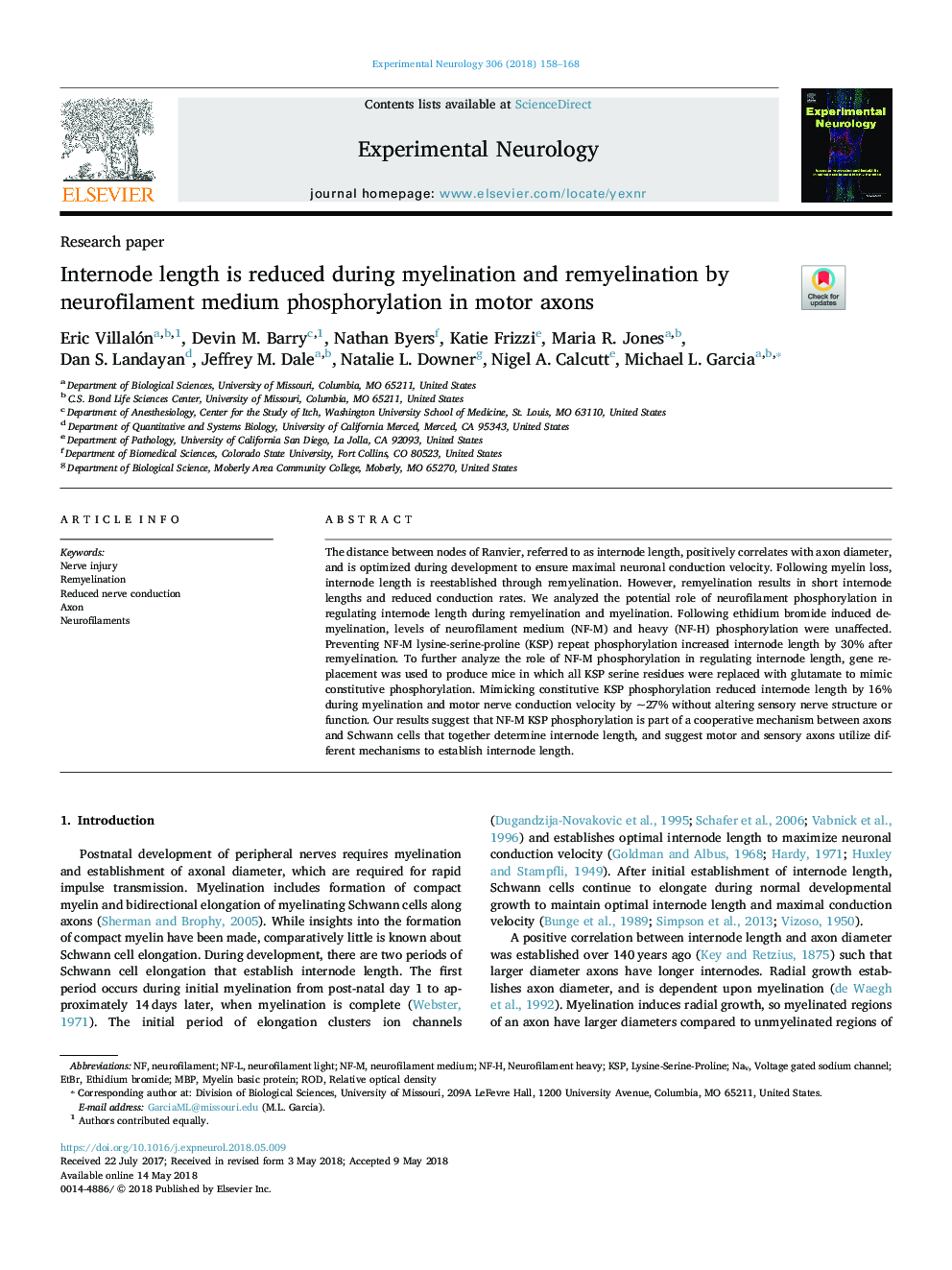| کد مقاله | کد نشریه | سال انتشار | مقاله انگلیسی | نسخه تمام متن |
|---|---|---|---|---|
| 8684597 | 1580131 | 2018 | 11 صفحه PDF | دانلود رایگان |
عنوان انگلیسی مقاله ISI
Internode length is reduced during myelination and remyelination by neurofilament medium phosphorylation in motor axons
ترجمه فارسی عنوان
طول مرز در طول مولکولهای مولکولی و ریملینیزاسین توسط فسفوریلاسیون محیطی نوروفیلیم در اکسون های مغزی کاهش می یابد
دانلود مقاله + سفارش ترجمه
دانلود مقاله ISI انگلیسی
رایگان برای ایرانیان
کلمات کلیدی
RODKSPEtBrNF-Mneurofilament heavyNF-LNF-HMBPRemyelination - RemyelinimasNerve injury - آسیب عصبیaxon - آکسون ethidium bromide - اتیدیوم برومایدrelative optical density - تراکم نسبی نسبیneurofilament medium - محیط عصبیNav - نهneurofilament light - نور نورفیلمneurofilament - نوروفیلامنتNeurofilaments - نوروفیلم هاvoltage gated sodium channel - ولتاژ کانال سدیمMyelin basic protein - پروتئین پایه میلین
موضوعات مرتبط
علوم زیستی و بیوفناوری
علم عصب شناسی
عصب شناسی
چکیده انگلیسی
The distance between nodes of Ranvier, referred to as internode length, positively correlates with axon diameter, and is optimized during development to ensure maximal neuronal conduction velocity. Following myelin loss, internode length is reestablished through remyelination. However, remyelination results in short internode lengths and reduced conduction rates. We analyzed the potential role of neurofilament phosphorylation in regulating internode length during remyelination and myelination. Following ethidium bromide induced demyelination, levels of neurofilament medium (NF-M) and heavy (NF-H) phosphorylation were unaffected. Preventing NF-M lysine-serine-proline (KSP) repeat phosphorylation increased internode length by 30% after remyelination. To further analyze the role of NF-M phosphorylation in regulating internode length, gene replacement was used to produce mice in which all KSP serine residues were replaced with glutamate to mimic constitutive phosphorylation. Mimicking constitutive KSP phosphorylation reduced internode length by 16% during myelination and motor nerve conduction velocity by ~27% without altering sensory nerve structure or function. Our results suggest that NF-M KSP phosphorylation is part of a cooperative mechanism between axons and Schwann cells that together determine internode length, and suggest motor and sensory axons utilize different mechanisms to establish internode length.
ناشر
Database: Elsevier - ScienceDirect (ساینس دایرکت)
Journal: Experimental Neurology - Volume 306, August 2018, Pages 158-168
Journal: Experimental Neurology - Volume 306, August 2018, Pages 158-168
نویسندگان
Eric Villalón, Devin M. Barry, Nathan Byers, Katie Frizzi, Maria R. Jones, Dan S. Landayan, Jeffrey M. Dale, Natalie L. Downer, Nigel A. Calcutt, Michael L. Garcia,
